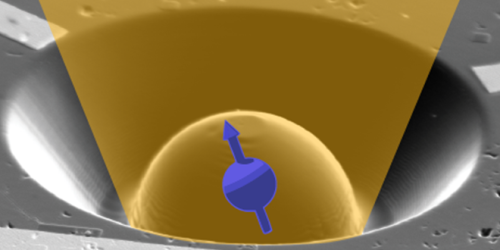Vetting Neutral Nitrogen Vacancies
Nitrogen-vacancy centers are small defects in diamond crystals, which can perform many functions in quantum information and sensing technologies (see Q&A: Defects Wanted; Apply Here). Negatively charged ( ) centers—those with one extra electron—have proven to be the most useful, but the defects also come in a less-studied neutral state ( ). Now, Simon Baier from Delft University of Technology in the Netherlands and his colleagues have performed a series of optical spectroscopy experiments that reveal the excitation levels in centers, knowledge that could improve the applicability of nitrogen-vacancy centers [1].
Like an atom, nitrogen-vacancy centers have several bound electrons, which can reside in one of many orbitals. The center—with six electrons—is prized for its long-lived spin states that can store quantum information. However, under laser excitation an center can spontaneously lose an electron and switch to , resulting in a loss of signal and the decoherence of nearby qubits. Those problems could be mitigated if the center’s spin properties were better understood.
centers rapidly undergo transitions, making it difficult to identify the initial and final states of a given transition. Baier and colleagues overcome this problem by developing a technique that can carefully place a single nitrogen-vacancy center in a well-defined state. By monitoring the light emission from this targeted center, they showed that they could clearly identify transitions involving orbital-state changes from those involving spin-state changes. They also measured how the spin states evolve, both in the dark and under laser illumination. They then used this information to demonstrate a low-error (high-fidelity) readout technique of the spin state that could be used in future qubit applications.
–Michael Schirber
Michael Schirber is a Corresponding Editor for Physics Magazine based in Lyon, France.
References
- S. Baier et al., “Orbital and spin dynamics of single neutrally-charged nitrogen-vacancy centers in diamond,” Phys. Rev. Lett. 125, 193601 (2020).




